Are you a Quiet Speculation member?
If not, now is a perfect time to join up! Our powerful tools, breaking-news analysis, and exclusive Discord channel will make sure you stay up to date and ahead of the curve.

The Scene: I was enjoying my weekend, minding my own business, working my way through the Battle for Zendikar spoiler in cool, calm, collected fashion. Aside for a momentary lapse in reading ability, I was relatively under control, ready to calmly burst dreams and inform readers exactly why Shambling Vent is unimpressive at best.
Yeah, so, holy $(@&. #mtg #MTGBFZ pic.twitter.com/tDGllzXB95
— Trevor Holmes (@7he4rchitect) September 15, 2015
Then Zac Elsik tore through Oklahoma City like a *POOR ATTEMPT AT TORNADO JOKE REDACTED*. Looks like the BFZ spoiler discussion will have to wait! The questions that should be on everyone’s mind (besides what is Cheez Whiz made of) are: 1) How was Zac able to do so well with a rogue deck? 2) How do we go about fighting Lantern Control? And 3) Where do we go from here? Let us proceed.
[wp_ad_camp_1]
Lantern Control
If we're going to start anywhere we should probably start with the decklist in question.
"Lantern Control, Zac Elsik, 1st, - GP Oklahoma City"
For those that are unfamiliar with the basic strategy of the deck, I suggest reading Modern Nexus’ Primer on the archetype here. Seriously, do your homework, there will be a quiz later. Unlike almost every other combo deck in the format, Lantern Control has the unique ability to simultaneously protect and execute its gameplan through normal means, without jumping through hoops to craft the gamestate to a favorable position. Let me explain.
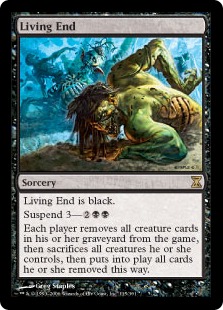 Most combo decks in Modern function on a strict principle of non-interaction, concentrating primarily on consistency and speed, relying on their “payoff” to win the game outright as long as they’re able to get there. We see this all the time in decks like Living End, Amulet Bloom, and Tron; strict adherence to non-interaction, looking to set up a certain combination of cards as fast and consistently as possible. Yes, Living End's combo has an interactive element, but it gets there non-interactively and the interaction is incidental so it fits. Burn can even be considered an extension of this, where it’s “combo” is 6-7 cards that do 3 damage to the face. These strategies are powerful thanks to a potent combination of speed and consistency which is exactly why they are a large threat in the format.
Most combo decks in Modern function on a strict principle of non-interaction, concentrating primarily on consistency and speed, relying on their “payoff” to win the game outright as long as they’re able to get there. We see this all the time in decks like Living End, Amulet Bloom, and Tron; strict adherence to non-interaction, looking to set up a certain combination of cards as fast and consistently as possible. Yes, Living End's combo has an interactive element, but it gets there non-interactively and the interaction is incidental so it fits. Burn can even be considered an extension of this, where it’s “combo” is 6-7 cards that do 3 damage to the face. These strategies are powerful thanks to a potent combination of speed and consistency which is exactly why they are a large threat in the format.
On the other hand, we have interactive combo like Splinter Twin and Scapeshift, that are similarly trying to do unfair things, but are looking to react along the way (sacrificing speed and consistency for interactive elements). The strength of this approach lies in their resiliency; by “slowing down” their combo gameplan they are able to interact with the opponent, giving them more game against hate and a chance to win if their opponent has a faster goldfish or their own plan stumbles. The downside to this approach is clear, however. By reducing the speed and consistency of their primary gameplan in favor of interaction, decks like Twin and Scapeshiftoften experience poor/slow/awkward draws that contain both combo and reactive elements. They play fewer ways to find the combo than more dedicated non-interactive combos and so may never be able to assemble the combo and win.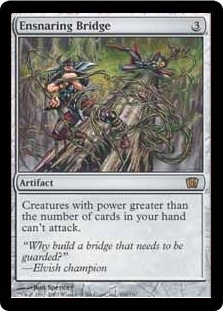
Back to Lantern Control. While the “combo” of the deck is Ensnaring Bridge + no cards in hand, the real strength of the deck lies in its ability to control the game without sacrificing combo elements. Lantern of Insight, Ghoulcaller's Bell, and Codex Shredder work to kill the opponent but slowly, focusing instead on manipulating the top of the library so the opponent never draws a relevant card to put up a fight while simultaneously digging for Ensnaring Bridge and additional/missing combo pieces. Inquisition of Kozilek and Thoughtseize also serve a double function. They interact with the opponent’s hand (stripping answers and threats) while emptying our own hand quickly to enable Ensnaring Bridge. The strength of the discard spells in this deck is second to none, except perhaps Suicide Zoo. Regular readers of my column might remember a discussion about “using every part of the buffalo” in regards to Thoughtseize, and the concept applies here as well.
GP Oklahoma City
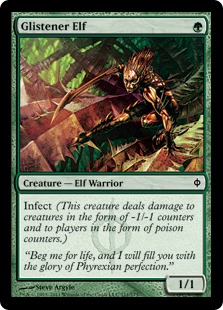 Last week, we discussed how Todd Anderson was able to take an unexpected deck into a field aimed primarily at Grixis Control and dominate. Todd capitalized on positioning by choosing a powerful, linear deck to successfully attack a field pushed too far towards one end of the metagame-spectrum. While everyone was focused on grinding out Grixis Control with Relic of Progenitus and resilient anti-control measures, Todd “next-leveled” the field, wielding a fast, consistent aggro deck against opponents caught out of position. For Oklahoma City, Infect was on everyone’s minds. No one wanted to lose to it again so they made sure that they could interact with it and prepared accordingly.
Last week, we discussed how Todd Anderson was able to take an unexpected deck into a field aimed primarily at Grixis Control and dominate. Todd capitalized on positioning by choosing a powerful, linear deck to successfully attack a field pushed too far towards one end of the metagame-spectrum. While everyone was focused on grinding out Grixis Control with Relic of Progenitus and resilient anti-control measures, Todd “next-leveled” the field, wielding a fast, consistent aggro deck against opponents caught out of position. For Oklahoma City, Infect was on everyone’s minds. No one wanted to lose to it again so they made sure that they could interact with it and prepared accordingly.
So what did we see in Oklahoma City? Infect comprised 7% of the Day Two metagame, but no lists were able to make it to a Top 32 finish. This suggests a field loaded up on spot removal for Infect. What’s great against decks packed with removal? Ensnaring Bridge! This point is further supported by the relatively strong performances of Naya Company, Elves, Amulet Bloom and Scapeshift (40% or better Day 2 conversion rate). Collected Company and combo definitely seemed to be where you wanted to be on Day 2 in Oklahoma, and Zac was able to blast through the field all the way to the finish line and take the trophy.
How Do We Beat It?
So far, Lantern Control has been able to leverage one interesting resource that hasn’t really been discussed: it’s weird! The deck contains many “free” interactions and angles of attack that make it difficult to hate out directly. Its existence as an artifact-based combo deck already reduces the field of possible interactive elements down to a thin list, unlike something like Splinter Twin where anything from Dismember to Vines of Vastwood to Torpor Orb and Virulent Plague can disrupt it.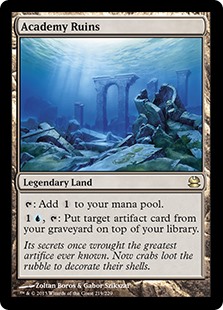 In addition, many alternate paths to victory are present in the deck, and they fit in the maindeck too! Academy Ruins can keep buying back Ensnaring Bridge or Codex Shredders forever to win via decking, and Ghirapur Aether Grid and Pyrite Spellbomb can even let the deck win through damage! Spellskites, additional Academy Ruins, and Welding Jars out of the sideboard make life horrible for anyone relying on Kolaghan's Command to get them there against “artifact decks”. A full playset of Sun Droplets are present to fight Burn.
In addition, many alternate paths to victory are present in the deck, and they fit in the maindeck too! Academy Ruins can keep buying back Ensnaring Bridge or Codex Shredders forever to win via decking, and Ghirapur Aether Grid and Pyrite Spellbomb can even let the deck win through damage! Spellskites, additional Academy Ruins, and Welding Jars out of the sideboard make life horrible for anyone relying on Kolaghan's Command to get them there against “artifact decks”. A full playset of Sun Droplets are present to fight Burn.
All is not lost, however. The deck has a few weaknesses that can be exploited, but full disclosure, my Gatherer search of “destroy target lantern control” returned zero results. Looks like it’s the hard way boys.
Blood Moon: Aside from Mox Opal and a basic Forest, the list has no ways to produce colored mana under a Blood Moon. This mean that if we can stick one, they won’t be able to Abrupt Decay our follow up Stony Silence or other hate card, which should give us enough time to find a path out from under their Ensnaring Bridge. This is a tough fight to win, however, as they play a bunch of discard that we need to dodge, and doesn’t solve the Academy Ruins/Ensnaring Bridge loop. I think we can do better. [EDIT: astute readers have caught that Blood Moon does stop the Academy Ruins loop, because that's what Blood Moon does. Thanks readers! -Trevor]
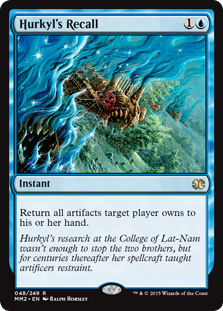 Hurkyl's Recall: Look, it might be time. Affinity is still good (though it will catch some splash hate from Lantern’s performance) and Recall dodges Spellskite/Welding Jar/Academy Ruins shenanigans. Depending on size of fatties involved you might only need one attack step to win the game and if not the number of artifacts on the field could result in two or more attack steps, as it might take Lantern two full turns or more to dump their hand again to the point that Bridge becomes effective.
Hurkyl's Recall: Look, it might be time. Affinity is still good (though it will catch some splash hate from Lantern’s performance) and Recall dodges Spellskite/Welding Jar/Academy Ruins shenanigans. Depending on size of fatties involved you might only need one attack step to win the game and if not the number of artifacts on the field could result in two or more attack steps, as it might take Lantern two full turns or more to dump their hand again to the point that Bridge becomes effective.
Ancient Grudge: Remember this card? It used to be the default artifact hate until new kid Kolaghan's Command kicked it off the playground. Now, however, that flashback is looking better than ever. Yes, Grafdigger's Cage may be an issue if they board it in, but if not then the mill rocks will not prevent you breaking the Bridge and swinging for lethal. And it hits Affinity!
 Don’t plan on winning with creatures: Scapeshift seems to be a strong option, as it dodges Inquisition of Kozilek and cares nothing about the combat step. Lantern is really reduced to just hoping Scapeshift never finds, you know, Scapeshift, which can be a pipe dream since Scapeshiftcan Serum Visions/Anticipate/Peer Through Depths early enough to find it before Lantern gets Lantern online. Aside: I propose no longer naming decks after cards in those decks. It makes crafting legitimate sentences impossible. Tango has been thrown around pretty liberally lately, I propose Lantern become Tango Control. Scapeshift can just go die. In addition, Lantern Control has a tough time beating Burn, as seen by the playset of Sun Droplet plus a Nature's Claim in the board. A critical mass of burn spells means that Burn can often have two or three in a row on top of the deck, and it can normally do 10-12 damage before Ensnaring Bridge comes down, meaning Lantern has to fade a LOT of draw steps to win.
Don’t plan on winning with creatures: Scapeshift seems to be a strong option, as it dodges Inquisition of Kozilek and cares nothing about the combat step. Lantern is really reduced to just hoping Scapeshift never finds, you know, Scapeshift, which can be a pipe dream since Scapeshiftcan Serum Visions/Anticipate/Peer Through Depths early enough to find it before Lantern gets Lantern online. Aside: I propose no longer naming decks after cards in those decks. It makes crafting legitimate sentences impossible. Tango has been thrown around pretty liberally lately, I propose Lantern become Tango Control. Scapeshift can just go die. In addition, Lantern Control has a tough time beating Burn, as seen by the playset of Sun Droplet plus a Nature's Claim in the board. A critical mass of burn spells means that Burn can often have two or three in a row on top of the deck, and it can normally do 10-12 damage before Ensnaring Bridge comes down, meaning Lantern has to fade a LOT of draw steps to win.
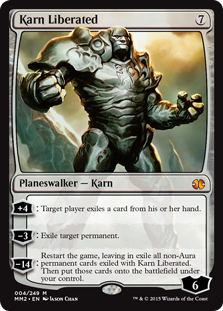 Tron gets better: Maindeck Relic of Progenitus to fight Academy Ruins, the consistency and redundancy to get Tron online even through opposing library manipulation, and a top end of Oblivion Stone, Karn Liberated, and Ugin, the Spirit Dragon drawing seven cards should do well against Lantern Control. It even gets access to Nature's Claim (which it was playing to fight Blood Moon and Affinity anyway) and it benefits from the field diluting their boards to fight Lantern as well. If I was playing a big event tomorrow, Tron is probably where I would start (I can’t believe I just said those words).
Tron gets better: Maindeck Relic of Progenitus to fight Academy Ruins, the consistency and redundancy to get Tron online even through opposing library manipulation, and a top end of Oblivion Stone, Karn Liberated, and Ugin, the Spirit Dragon drawing seven cards should do well against Lantern Control. It even gets access to Nature's Claim (which it was playing to fight Blood Moon and Affinity anyway) and it benefits from the field diluting their boards to fight Lantern as well. If I was playing a big event tomorrow, Tron is probably where I would start (I can’t believe I just said those words).
Where Do We Go From Here?
These past few weeks have been pretty linear, and while hindsight is 20/20, nothing that has happened so far should be too surprising. The format moved too far to midrange, and Infect took over, at which point it became too removal-focused, which allowed combo to take advantage. Lantern Control is resilient and difficult to attack directly, but fortunately for the rest of us the deck is also difficult to pilot (and especially difficult to pilot quickly) which means that it will probably be a little more under-represented than it should be in the metagame, not unlike Amulet Bloom. The same was said about Eggs, however, and people still played Eggs to the point of its banning. I’m definitely not saying Lantern is deserving of a ban: just referencing the fact that the justification “the deck is too hard/weird/slow to play” only works to a certain point. Ignore it at your own risk because Lantern Control is a real deck.
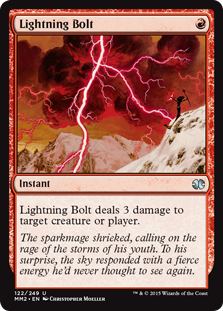 Moving forward, I’m definitely expecting better positioning for Burn, Tron, and Scapeshift. These decks seem to have good matchups against Lantern, so they’re a good place to start, but we have to be careful not to focus too much on Lantern. The best deck to fight Infect was Grixis Control, but the Grixis hate was a little too strong in Cincinnati and correcting that oversight (and overestimating Kolaghan's Command) allowed Lantern to take Oklahoma City. If people keep trimming graveyard hate for artifact hate, we could see Amulet or Grishoalbrand or Living End come back (another deck that has been punished by Grixis hate recently) and take the field by surprise. Currently, Modern is about to experience a slow month; the next big event for Modern is SCG States in the middle of October. Prepare to welcome our Eldrazi overlords, and use this time to perfect that sweet Zur the Enchanter list!
Moving forward, I’m definitely expecting better positioning for Burn, Tron, and Scapeshift. These decks seem to have good matchups against Lantern, so they’re a good place to start, but we have to be careful not to focus too much on Lantern. The best deck to fight Infect was Grixis Control, but the Grixis hate was a little too strong in Cincinnati and correcting that oversight (and overestimating Kolaghan's Command) allowed Lantern to take Oklahoma City. If people keep trimming graveyard hate for artifact hate, we could see Amulet or Grishoalbrand or Living End come back (another deck that has been punished by Grixis hate recently) and take the field by surprise. Currently, Modern is about to experience a slow month; the next big event for Modern is SCG States in the middle of October. Prepare to welcome our Eldrazi overlords, and use this time to perfect that sweet Zur the Enchanter list!
Thanks for reading! Did I miss any sweet tech for fighting Lantern Control? Have a prediction for the next “best deck”? Have a brew you want me to play on stream? Let me know in the comments!
Trevor Holmes
Twitch.tv/Architect_Gaming
Twitter.com/7he4rchitect


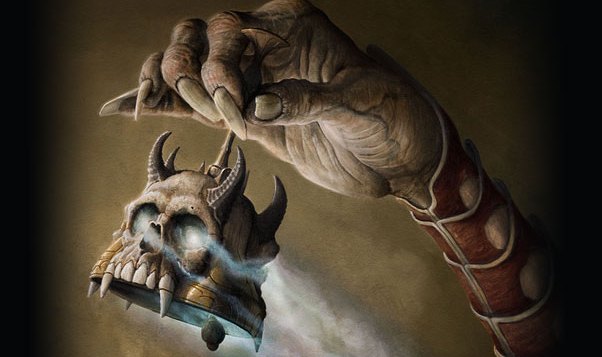


Nice article, but I’m surprised you didn’t mention Chalice of the Void, especially in combination with Hurkyl’s Recall. The guts of the deck is 1-mana artifacts and disruption spells, and if you land an x = 1 Chalice before they have Lantern + 1 mill rock, they’re basically praying for an Abrupt Decay or else.
Thanks for this. In most of my boards, I was hoping Damnation would do the trick, because it kills affinity creatures, I didn’t need much straight artifact hate, But seeing a rise in artifact decks in general, I do think Ancient Grudge needs to be upped in number.
The good news about Lantern winning is just this, that it will force people that were skimping on artifact hate they “should” have been playing to finally do so. Affinity always gets by because of the thinking that “other people will board for it”.
Where’s my quiz!? You promised!
Very nice written article, mister, and thanks for it. Surely be looking forward all these hate cards to bring in if Lantern somehow manages to pop up in our local store.
Play Tron – join the “dark” side!
I have yet to play against lantern control as Tron, but it’s something I would like to try. O-Stone probably ends the game immediately and Ugin/Karn can do their thing to either bolt them to death, provided they haven’t found pithing needle. That’s where we run into trouble. Lantern usually works with perfect information. Tron’s redundancy could be what hurts it most – O-Stone, Karn, and Ugin are the best cards, so shutting off 1-2 of them is BIG game.
Also (this is a little thing), Tron is more interactive than others give credit. We lack the finesse of counterspells and the efficiency of lightning bolt, so the flex spots are tailored to the metagame (usually 4-6 cards). I have a fourth clasm, 2 MD spellskites, the fourth O-Stone, and a MD Sundering Titan to compensate for the high amount of Burn, Twin, and Grixis in my area. MD relic seems to be the way to go at bigger events. Post-board games often see us keeping hands that are slow with key interaction (1 Tron piece, two groves, karn, star, stirrings, and a rending volley is an autokeep versus twin). It’s a unique ebb and flow, though we don’t get as much an advantage from being an unknown entity, which can make a difference since it needs to be approached a certain way.
Blood does solve the academy ruins loop, since ruins is now a basic mountain
Good catch, better than I thought 🙂 Might try Blood Moon in the matchup and see how it goes, thinking Academy Ruins was still online made me feel like BM was a poor plan at best.
Good, informative article. Just one minor nitpick regarding the section on Blood Moon: it shuts down academy ruins recursion by making the academy a mountain.
I had a pretty good time casting Day’s Undoing against this deck last week.
With Lantern Control being a new boogeyman, I think this article shows that playing something like UR Twin (with blood moon in the sb) is a good idea right now due to its good matchups against the decks that are good against Lantern Control. (It still has game vs bridge due to bouncing a bridge to hand to allow infinite exarchs to attack.)
With your stone/karn/ugin solutions keep in mind lantern plays some number of pithing needles and between the inqusitions and lanterns can know what’s in your hand and thus make the correct call and then choke you off the other options with their mill plan.
Perhaps I just got lucky, but I beat it with mono redl goblins. I boarded in Blood Moon for game two, but got it done in game one without it. I had to remember not to play my Lords when my opponent limited attackers based on cards in hand. Mogg War Marshall, Dragon Fodder, and Krenko’s Command were my friends!
I was also thinking chalice of the void where X is one would be pretty damaging. Almost all of the spells are cost one. If you get it off early most decks are only running two abrupt decays. It should leave the door open for removing ensnaring bridge without mill effects, the lantern, ancient stirings etc. Chalice is expensive partly because it’s already good against a lot of other things too.
The issue about any 1 card based solution to Lantern is you have to draw said card to be able to play it. Even once it’s drawn, Lantern potentially has ways to get rid of it. It’s an extremely resilient deck, only downside being probably the hardest in the format to pilot. If it becomes much more played I expect one of its key cards to be banned. The only obvious choice is banning Lantern of Insight itself, as this wouldn’t hurt any other archetypes. Banning bridge would hurt 8rack considerably.
If they ban lantern then they should also ban summer bloom since it doesn’t hurt any deck except amulet bloom